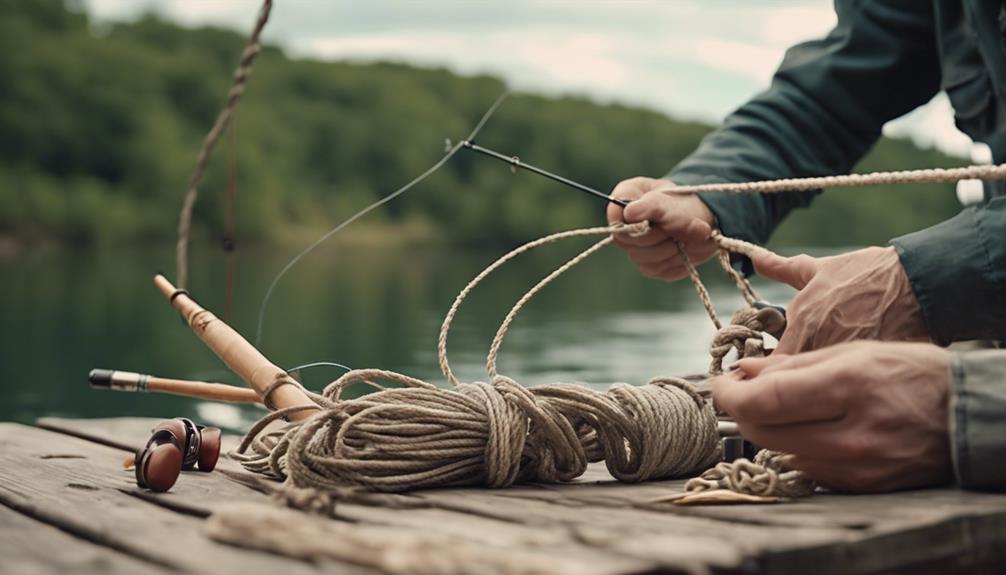Understanding the Basics of Fly Fishing Gear
Fly fishing is a unique angling method that relies on lightweight artificial flies to catch fish. One of the most important aspects of this fishing style is having the right fly fishing gear. From rods to reels and flies to waders, each component plays a crucial role in enhancing your fishing experience. Whether you’re a novice angler or a seasoned pro, understanding the basics of fly fishing gear will help you make informed decisions about what to buy and how to use it. This comprehensive guide will help you navigate through the essential equipment needed for a successful fly fishing trip.
Choosing the Right Fly Rod: Length, Weight, and Material
The first and most fundamental piece of fly fishing gear is the fly rod. When selecting a fly rod, consider the length, weight, and material. Generally, rods range from 7 to 10 feet in length and are categorized by weight, which affects the size of the flies you can cast and the type of fish you can target. A 5-weight rod is versatile and ideal for freshwater species, while heavier rods (6-8 weight) are better suited for larger fish in saltwater environments. Additionally, materials like graphite and fiberglass impact the rod’s action and sensitivity. Choosing the right rod is crucial for casting accuracy and overall fishing performance.
The Importance of Fly Reels: Types and Features
The fly reel is another essential piece of fly fishing gear, serving as the storage for your line and a tool for managing fish during a catch. There are two primary types of fly reels: single-action and multi-action. Single-action reels are simpler and less expensive, making them great for beginners. Multi-action reels offer better drag systems and are typically used by experienced anglers targeting larger species. When selecting a reel, pay attention to features such as drag quality, weight, and line capacity. A good reel should complement your rod and enhance your overall fishing experience.
Selecting the Right Fly Line: Types and Applications
Fly line is a critical component of your fly fishing gear, and choosing the right line can greatly influence your casting ability and success on the water. Fly lines come in various types, including floating, sinking, and intermediate lines. Floating lines are ideal for surface fishing and dry flies, while sinking lines are used for deeper water and nymphing techniques. Intermediate lines offer a balance between the two. Additionally, consider the line’s weight and taper, which affect how the line casts and presents the fly. Selecting the appropriate fly line is essential for matching your rod and reel setup and improving your chances of a successful catch.
Flies: The Heart of Fly Fishing Gear
No discussion on fly fishing gear would be complete without mentioning flies. Flies are the bait used to entice fish, and they come in an endless variety of shapes, sizes, and colors. The two main categories of flies are dry flies and wet flies. Dry flies float on the water’s surface, mimicking insects that fish typically feed on, while wet flies sink and imitate underwater creatures. Understanding the local fish species and their feeding habits is crucial when selecting flies. Additionally, consider the time of year and water conditions, as these factors can influence which flies are most effective. Investing in a diverse fly collection is essential for adapting to different fishing scenarios.
Waders and Boots: Essential Comfort and Safety Gear
When it comes to fly fishing gear, comfort and safety are paramount, especially when wading into the water. Waders and boots are essential for protecting you from cold water and ensuring you can move freely while fishing. Waders come in various styles, including chest waders, hip waders, and waist waders. Choose the style that best suits your fishing environment and personal comfort. Additionally, investing in a good pair of wading boots with proper grip and support is crucial for navigating slippery rocks and uneven terrain. Comfort and safety gear should never be overlooked, as they can significantly impact your fishing experience.
Accessories That Enhance Your Fly Fishing Experience
In addition to the primary fly fishing gear, several accessories can enhance your overall experience on the water. A good fishing net is essential for landing fish without damaging them or losing your catch. A fly box is necessary for organizing and storing your flies, making it easier to switch out patterns throughout the day. Other useful accessories include tippet material for connecting flies to your leader line, forceps for removing hooks, and a good pair of polarized sunglasses to reduce glare and improve visibility in the water. Investing in these accessories can elevate your fly fishing game and make your time on the water more enjoyable.
Maintaining and Caring for Your Fly Fishing Gear
Proper maintenance and care of your fly fishing gear are essential for ensuring its longevity and performance. After each fishing trip, rinse your gear with fresh water to remove any dirt, salt, or debris. Pay special attention to your rod guides and reel, as these components are prone to wear and tear. Regularly inspect your fly line for any nicks or frays and replace it as needed. Store your gear in a cool, dry place to prevent damage from humidity or extreme temperatures. By taking care of your equipment, you’ll ensure that your fly fishing gear remains in excellent condition for years to come.
Conclusion
In conclusion, having the right fly fishing gear is crucial for a successful and enjoyable fishing experience. By understanding the various components, including rods, reels, lines, flies, waders, and accessories, you can make informed decisions that will enhance your time on the water. Whether you’re just starting out or looking to upgrade your equipment, investing in quality fly fishing gear will pay off in the long run. Remember to maintain your gear to keep it in top shape, and most importantly, enjoy the thrill of fly fishing!
